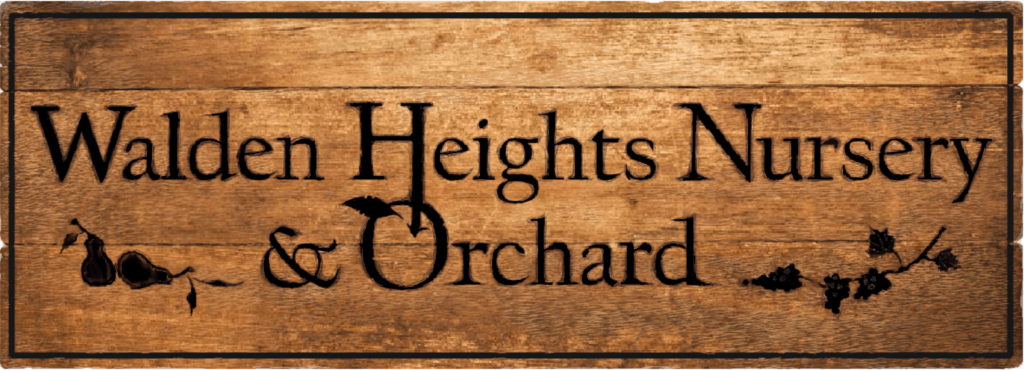What is Stratification :
Particular physical conditions are sometimes necessary in order to mimic the natural conditions of seed. Dormancy is a condition in which seeds of certain species are prevented from prematurely germinating. An example is an apple seed which if allowed to sprout during late fall when subfreezing conditions are impending would result in high mortality. Some species, therefore require further physiological activity and/or produce chemicals which inhibit the process of sprouting. If the seed in question is resting in an area close to the conditions of its original species orientation, then the natural weather and soil conditions is all that is required for germination. Some specimens may require several seasons to satisfy such requirements.
Artificial conditions may satisfy these requirements. This is what is generally referred to as stratification. It is simply the mimicking the natural conditions as closely as possible with an emphasis on the ideal. For instance, keeping conditions at 98 percent humidity and at 41 degrees for 90 days may be perfect for the conditioning of some malus or pyrus, although this rarely occurs as such in nature.
Although there is a wide range of choice as regards the materials, peat moss, wood shavings, sawdust, perlite, and soil are all possibility. Any material likely to rot readily should be avoided. Higher temperatures are more likely to cause rotting of the material and seed. Woody materials and peat are less likely to do so.
Sterilization of seed is sometimes employed, and less commonly, the medium. Note that disinfection rarely keeps seed clean for long and is often not worth the effort. It is more useful, however if unsprouted seed has developed fungal infection during stratification.
Soaking of any seed for 24 hours is generally held to be advantageous, both in terms of hydrating the seed, and in its ability to partially wash away germination-inhibiting substances. Medium is wet enough to be moist but not dripping wet, it should release no water when squeezed in the hand. Excess water will result in seed rot, if medium dries out seed stratification period may not be satisfied. Under no circumstances should sprouting seed be allowed to dry out.
After the period, sprouting in the medium may occur, but some species may only begin growth after being placed in warmer conditions. The safest routine is that when the period in days is met, place a sample under growing conditions and monitor their progress.
A decent procedure for cold moist stratification is as follows:
- Rinse then soak seed for 24 hours in water.
- Optional- disinfect seed (ie- 10% chlor. Bleach to 90% water) rinse well.
- Spread seed between layers (1-3”of moistened medium). The less contact seeds have with each other the better. There is no limit to the number of superimposed layers. A simple mixing of medium and seed is also possible as an alternative.
- For very small lots (ie- a packets of seeds) seeds may be spread between the layers of a damp paper towel, then inserted in a sandwich baggie and placed in the refrigerator. Check routinely.
- Most species will be kept at a temperature of 33 to 41 degrees F. The duration is dependent upon either the species or even the variety.
- Monitoring lot. Check for pathogen infection, drying out and sprouting. In some circumstances, you will need to disinfect, or at least wash the seed in the event of such infection. Cleaning is obviously much easier if the seed can easily be separated with the medium. Under no circumstances should a disinfectant be used once the radicle (root tip) has emerged or the seed will be destroyed.
- After the pre-determined period is satisfied, seed casing opening or sprouting may occur. As stated previously, a test batch should be planted out to determine satisfaction of the stratification period. If sprouting has occurred before conditions are ready for planting, seed may be kept as is safely if temperature is kept low, ideally 33 degrees. Some studies have shown many species can have their sprouted seeds kept below freezing, but use caution at lower temps. Keeping sprouted seed at warmer temps (even within the 33-41 degree realm) for an extended period can result in mortality or excessively elongated hypcotyl.
Reminder- Many seeds, and in particular Prunus species, will be eaten or otherwise damaged if not protected. This is especially true if they are being fall planted or kept outdoors or in outbuildings. Metal screen or hardware cloth is usually an effective barrier.
Stratification of Specific Species :
Malus species (apple, crabapple) and Pyrus(pear) require cold damp stratification. Period needed to satisfy endodormancy varies with variety, but in general requires 2 to 4 months in damp conditions and within a temperature range of 33-41 degrees F. Freezing temperatures do not satisfy the conditions. Pre-soaking or continued rinses often reduces the time since it washes away substances inhibitory to germination.
Prunus Americana (American Plum) requires cold moist stratification at a temperature close to 41 (35-41) degrees F for 3 to 6 months. Better results are obtained if this is preceded by a warm stratification period of 5 weeks at between 60 and 70 degrees F. Provided the seeds are guarded against rodent damage, it is often easier to satisfy these conditions by fall planting without treatment. Often (as with many prunus species) seedlings may not emerge until the second year.
Prunus Mahaleb requires cold moist stratification at 35 to 41 degrees for approximately 100 days. Warm stratification pre conditioning normally not necessary.
Prunus Avium (Mazzard) requires a warm moist stratification period of 3 weeks at 70 degrees F, followed by a cold moist stratification period of approximately 120 days at 35 to 41 degrees F.

